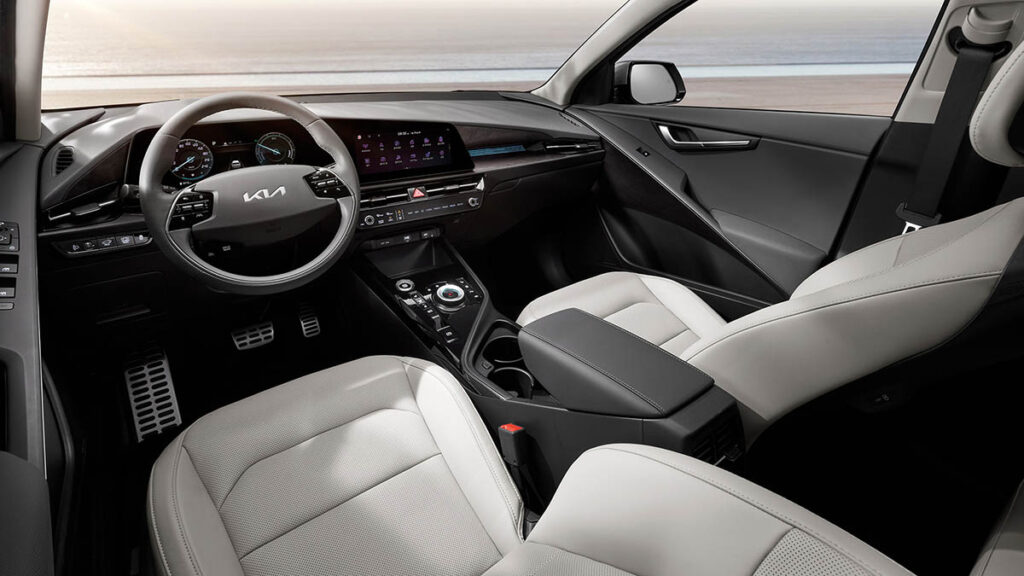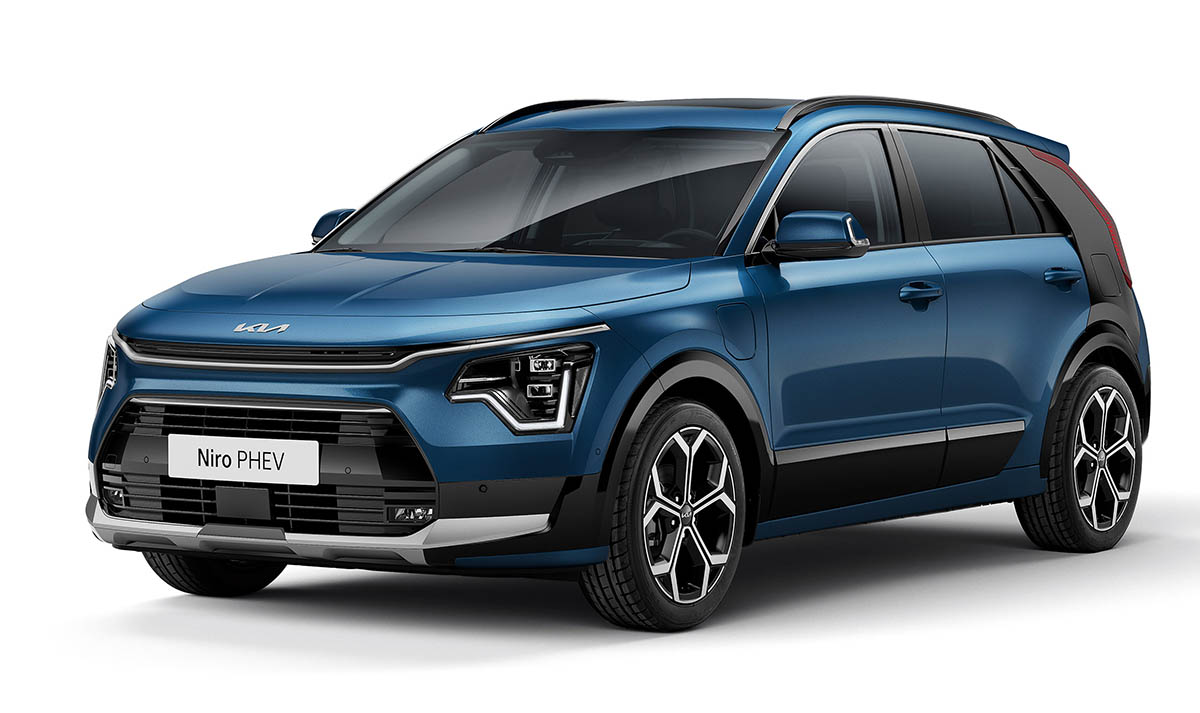Kia recently gave their Niro a major update and in actual fact it looks like a brand new car.
Sleeker lines and a much more modern front end, inspired by the larger Sportage are the main takeouts but there’s a new ‘sideblade’ on the rear quarter panels, which can be specified in a contrasting colour. It really makes a difference, particularly with a lighter colour.
Interior

Inside, things have been smartened up again and there’s twin large colour touchscreens to control both infotainment and for the driver’s display.
Beneath the central screen, there’s an array of touch sensitive buttons and you can switch between heating controls or satnav/entertainment controls. It makes the whole system easier to use and it’s very effective.
It was obviously designed for left hand drive markets though as I found the volume control – yes a proper rotary dial – to be a bit of a stretch.
Two trim levels are offered, K3 and K4 and my K4 test car lacked for nothing, including heated and ventilated seats which have you covered either way.
The seats themselves are very comfortable and there’s a sense of space around the cabin. Even in the back, there’s decent leg room and it’s only in the boot where there’s a bit of a compromise with the PHEV version I was driving. Because the battery (a larger 11kW item) is sited under the boot floor, there’s a little less room than either the hybrid or full electric model. It’s about 100 litres smaller than the hybrid Niro at 348 litres but it’s enough for most needs.
Powertrain
Talking of the PHEV powertrain, it has a claimed electric range of over 60km although I found the petrol engine started to kick in around 40km into the journey, particularly at higher speeds. Combined, the petrol and electric power units push out 181bhp and it’s enough to give the Niro decent performance although for best effect you really need to keep it in sport mode.
There’s a six speed automatic gearbox driving the front wheels and really, you can just drive it as a normal car that you plug in overnight. There’s a simple rotary dial to select the gears with the parking brake button in the middle.
I was a bit disappointed with the charging arrangements. The onboard charger taps out at just over 3kWh so a proper 7kW home wall charger won’t be used to its full potential. Additionally, the charging port is on the left front wing, making it awkward to use some on street chargers.
To make the best use of the power in the battery, there are three levels of regenerative braking on offer, controlled by paddle switches on the steering wheel. The highest level gives close to one pedal driving and I found myself using the paddles quite a bit to modulate my speed.
The ride is particularly comfortable, helped no doubt by the weight of the batteries. The car seems to be a bit higher than a normal hatchback and this contributes to the slightly lacklustre handling, not helped by the light steering. It’s fine around town but at higher speeds it could do with being a bit firmer. There’s nothing particularly wrong with the way it drives but you won’t get up early in the morning to take a drive for the hell of it.
Equipment
The Niro though is extremely well equipped. Even the K3 model gets niceties including 18” alloys, active cruise control, part leather upholstery, satellite navigation, keyless entry and wireless phone charging.
Next up, the K4 also gets electrically adjustable full leather seats, an electric tailgate, head up display and heated front and rear seats.
The PHEV Niro starts at €39,700 with my K4 test car priced from €42,700, very well placed against the competition, particularly with equipment levels taken into account.
Of course, there’s now a Niro EV just starting to get into customers’ hands so there’s a full range of choice from hybrid, plug in hybrid and EV. Just pick which one suits.










